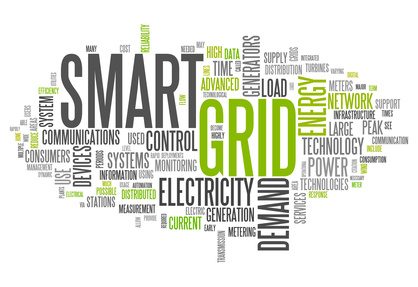
Last week, in a moment of weakness, I was on my Pinterest board (is that what it’s called?), when I came upon this excellent tip sheet from a marketing blog[1]. I noted that the “emotional” alternatives to the “intellectual,” bloated phrases were simpler with fewer syllables and easier to read. On the same day, I was studying the benefits and costs of “advanced metering infrastructure,” aka, “smart grid.”
Do you see a problem with our industry here? Name something with grotesquely puffy language, and then tag it with an incomprehensible acronym, rather than using a simpler term like, oh, smart grid. Nine syllables versus two. Three letter acronym versus two words. Do they mean the same thing? Not quite, but does Joe Consumer care?

What is AMI or Smart Grid?
If you care to subject yourself to Googling AMI, you will find a typical response that AMI is two-way communication between utilities and customers. My read: AMI is the hardware and smart grid is the software[2].
Not so much, strictly speaking. I’ll get to that later.
AMI allows utilities to capture energy, water, or natural gas consumption on a timescale of hourly or more frequently. The utility can collect and store this information remotely. It is entirely up to the utility how much of this information is provided back to the customer. My utility, Xcel Energy, provides data only on a daily basis.
Below is a chart of daily and 30-day rolling average daily use. I added the 30-day average myself to make it more useful. My energy consumption is erratic, with the erraticness driven mostly by air conditioning. However, I will say the data needs to be reviewed. Opower, which handles this piece for Xcel, had me booked for 819 kWh in one day the past year. How did that happen? That is easy to filter.
The cooling periods of summer are plain to see. I could explain some of the other hills and valleys, but that is beyond the scope of this post.

Green Button
If you are like me, you have heard of the “Green Button,” but what in tarnation is that? My recollection is it had something to do with the Obama White House. Was it the key to launch a nuclear attack on Ireland, der Laddy? No.
Apparently, the green button is what customers click to download their data, and that is what I did for the chart above.

The Two-Way Misnomer
AMI alone is not two-way, with the customer. It is all about remote data collection that feeds data in one direction – to the utility. It is also used for remote control to reroute power in cases of grid faults, keeping the lights on. Grid management is the two-way control system piece of AMI.
The utility can also package and provide data, information, tips, and tricks back to customers, like Opower does for Xcel Energy. But Opower is not AMI. Smell what I’m cookin?
Benefits of AMI
AMI is to 1970s utility data collection as the internet is to the US Mail. AMI provides instant, granular data collection from all over the grid. Back in the day, growing up on the farm(s), we used to read our electric meters and report those numbers to the REC (rural electric cooperative). Even as recently as a couple years ago, we were doing the same thing for our water meter. That has since been replaced with AMI.
Meter Reading
The first major benefit of AMI is remote meter reading. Like I discussed a couple weeks ago in Gozer the Disruptor, Replace or be Replaced, technology replaced the meter-reading person.
Speaking of farms, when I was a wee lad, we had a milkman deliver milk to our house. We even had a metal cooler box for the guy to store the milk until we picked it up – kept it cold in the summer and prevented freezing in the winter. The one shown nearby was scooped up on eBay for $49.

Outage Recovery
In analog days, utilities needed callers to notify power outages. I suppose they triangulated the area of those customers calling to determine the location of the fault. With AMI, utilities can pinpoint exactly where the fault is, and what it is. I imagine call centers reverted from information collection and transfer to help restore power, to merely assuaging and informing customers. A good digital delivery via website, Twitter, and other platforms are more expedient and cheaper than call center staff. Again, technology replaces pleasant call-center person.
Efficiency
I may be wrong, but I think a lot of us may consider smart grid to be primarily a tool for energy efficiency. It is not. However, it can be used for efficiency and engagement, particularly for residential customers.
How much engagement is needed? There are electric and gas loads to be reduced, and there is hourly pricing, maybe, someday. AMI can be used to inform customers of the energy and cost required to operate just about everything in their home. But what they really need to understand is when to do their energy-using thing.
Plenty more to come.
[1] The Rant is content marketing, and how appropriate is it to provide content on how to deliver content marketing? Huh?
[2] But, then, what is a smart meter? Not software!
